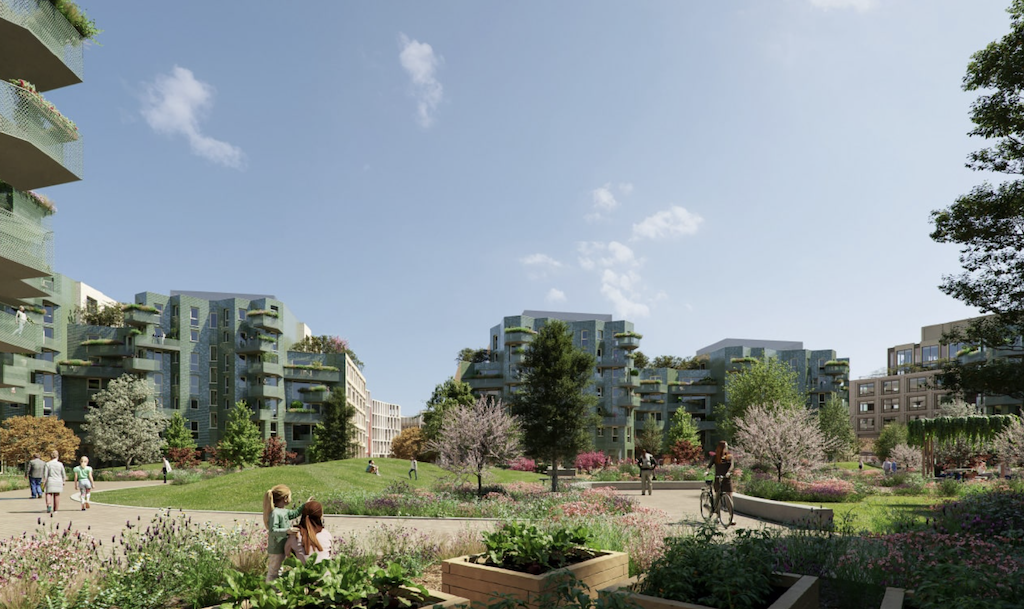Planning reforms proposed for housing developments near train stations
The Government has announced proposed planning reforms intended to increase the number of homes built near train stations and other well-connected transport hubs. The measures form part of a wider update to the National Planning Policy Framework (NPPF), which will be published for consultation later this year.
image: Network Rail/Platform4
Under the proposals, housing developments close to train and tram stations would be given clearer and more consistent planning guidance, with a presumption in favour of approval where schemes meet set criteria. The approach is designed to focus new development in areas with good public transport access, enabling higher-density neighbourhoods and reducing reliance on car travel.
The Government also outlined plans to streamline decision-making on larger housing applications. Local authorities would be asked to notify the Housing Secretary if they intend to refuse proposals for 150 homes or more, giving central government the option to review decisions in certain circumstances.
Housing Secretary Steve Reed said the aim of the reforms is to ensure that new homes are located in places with strong transport links, making development more practical for both local authorities and residents.
The announcement follows ongoing discussions between government, local planning authorities, industry organisations and housing stakeholders on how to speed up housing delivery while maintaining design, environmental and community standards.
Reed said, “We’re making it easier to build well-connected and high-quality homes, using stronger powers to speed things up if councils drag their feet, and proposing to streamline the consultation process to cut back delays.
“This is about action: spades in the ground, breathing new life into communities, and families finally getting the homes they need.”
Catherine Williams, Planning Director, with the Homes Building Federation welcomed the proposed changes, saying that increasing certainty and speeding up planning decisions could help improve housing supply.
She said, "Reducing the number of statutory consultees involved with planning applications is welcome and should help reduce delays and bureaucracy in the planning process. Ensuring more larger sites come forward and preventing unnecessary delays to the approval of appropriate sites is a positive move that could accelerate supply.”
Richard Beresford, chief executive of the National Federation of Builders (NFB), said, “Building around existing transport infrastructure is the organic placemaking the nation has been crying out for. It will provide planning certainty – helping projects become viable and speeding up delivery of homes.” His colleague and head of policy and market insight at NFB, Rico Wojtulewicz is reported as saying in PropertyWire: “Building around transport, encouraging density, tackling planning politics, and supporting planners – many of us in the industry are left speechless at the ambition and conviction.”
Will Thomas, partner in planning at UK and Ireland law firm Browne Jacobson, cautioned, “Developers will welcome any move to unlock housebuilding, but any intervention from central government must ensure it doesn’t merely move decision-making bottlenecks between public authorities or risk undermining an already fragile public confidence in development.
“Bypassing local authorities to call in applications for more than 150 homes to the Secretary of State will still require the involvement of the Planning Inspectorate, which may face a significant influx of applications it hasn’t dealt with until now.
“Moving this administrative layer from local to central government therefore raises questions about whether sufficient capacity exists within the civil service – and whether a better solution would be to resource local authority planning departments more effectively.
“It’s important that decisions aren’t rushed and all the necessary considerations are still considered to ensure that development is well planned. Forcing through large-scale housing projects too rapidly could increase tensions between communities and government, so the government’s housebuilding ambitions must be matched by a drive to upgrade critical infrastructure.”

